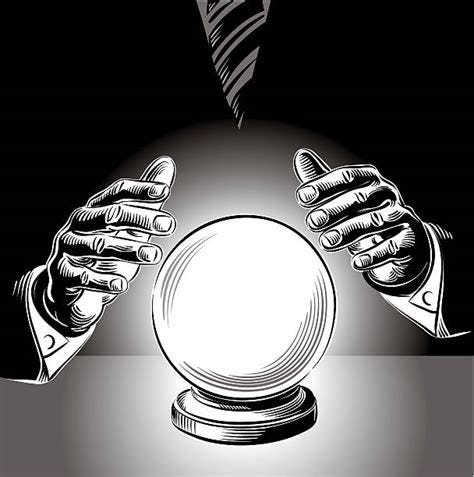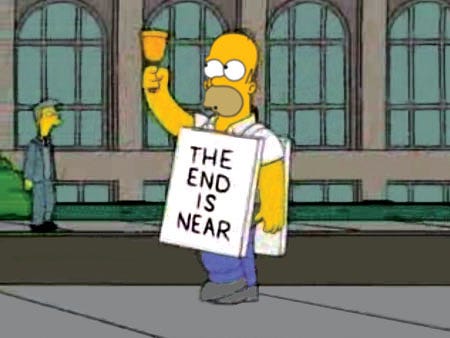I have no crystal ball, and the following analysis is not rocket science, however—we can say with assurance that a Black Swan event is on the radar. By some accounts, we may expect the event sometime in June and July. In my view of global events I see many markers and precursors that indicate the upcoming ‘reality’ upset, and the triggers we may label as a Black Swan event.
Many who’ve been tracking the BRICS alliance and the return to a gold-backed currency model know that the US Dollar is doomed. The politicians who are jockeying for a strategic position within the crumbling house of cards simply repeat the pablum of the so-called financial “experts.” The presumed experts continue to present semantic wizardry as if useful financial data points are presented. Yellen and her FED/BIS/IMF cronies speak in a code that only has significance for members of their club; and these signals are not meant to be understood by the rest of us. Wall St moguls know how to read the signals and adjust their hedge fund portfolios as needed. [I speculate that the corporate media’s talking heads are not even writing the financial narrative; and consider it more likely that the Langley VA propaganda team is sending the MSM “News” producers the script. Meantime, while riots rage in France and elsewhere— people are taking their money out of banks worldwide. Smart people have invested in precious metals. The caveat is always— ‘tis easier to invest in gold and silver if you have enough extra cash around in order to invest.]
As of 2023, we are witnessing a global insurrection. The rising tide of the peasant’s outrage has reached a deafening crescendo. Once again, the cycles of history seem to repeat and it appears that many heads of state will soon be rolling in the gutter.
This brief historical footnote from the 1640’s is an example of the repetitive trajectory:
“…in Cromwell’s time, certain moral intuitions and principles appeared that haven’t disappeared; things got said that could never be entirely unsaid. Government of the people resides in their own consent to be governed; representative bodies should be in some way representative; whatever rights kings have are neither divine nor absolute; and, not least, religious differences should be settled by uneasy truces, if not outright toleration.” source— https://www.newyorker.com/magazine/2023/04/24/the-blazing-world-jonathan-healey-book-review
Revisiting a favorite source for assessing the hard cold realities of a failing Global Bankster Matrix—Yanis Varoufakis(former Greek Minister of Finance) had this to say: “Don’t listen to the experts.”
Yanis informed us that the Central Banks were bankrupt in 2008!
Deutschebank would not officially announce its own bankruptcy until 2015 (Yanis was way ahead of the WSJ, Bloomberg, and Economist finance reports—all of which appeared to be snoozing.)
In 2012—Global Research reported the derivatives market was escalating upwards into the Quadrillion range.
What’s been holding up the House of Cards since 2008?
Short answer:
…approximately $600 trillion up to $1.5 quadrillion in derivatives —and most importantly our own complicity in believing the Federal Reserve’s funny money actually has any lasting value. We continue to buy stuff with the paper dollars and digital credit units as if there is true value in the merit of the Central bank’s program, or call it ‘their system.’ It’s a make-believe realm and we play along due to having no say in how the FED or the BIS decide what value the global currencies might be at the moment. We are expected to remain clueless as the financial markets fluctuate and continue to create wealth for the upper tier.
Inflation/deflation cycles are akin to treading water as the ship sinks while frantically trying to bail ourselves out with a teacup. This brings us to a probability many financial observers have been predicting for the last 10 or 20 years: The Black Swan event will be here soon. This is not to be confused with the ‘doom and gloom-end of the world’ prophecy and clichés depicted many many times in cartoons: “The End Is Near.”
For a deeper contextual understanding of the Black Swan signals at hand I’ve chosen to republish the following article. It’s explicit and an easy read.
The following comes from ‘The Black Swan Model’—by Mithun Sridharan and Shashwata Ghosh :
“Nassim Nicolas Taleb, in his book, The Black Swan, first introduced the black swan model as an idea that demonstrated how impossible it is to predict black swan events, unless one has knowledge about every single entity that exists in a certain time and place. According to Wikipedia:
The black swan theory or theory of black swan events is a metaphor that describes an event that comes as a surprise, has a major effect, and is often inappropriately rationalised after the fact with the benefit of hindsight.
Taleb wrote about the idea of Black swan in 2007 prior to the financial crisis of 2008. However, in 1697, Dutch explorers led by Willem de Flamin became the first Europeans to see black swans in Western Australia. The term later changed to the idea that what was perceived as impossible would later be disproved.”
Characteristics Of Black Swan Events
“Taleb argued that black swan events are so rare that they are impossible to foresee. Hence, it is important to always assume that black swan events are a possibility and try to plan accordingly. Yet, black swan events will still result in devastating consequences.
Using the ideas of the 2008 financial crisis and the black swan concept, Taleb later argued that allowing broken systems to fail actually strengthens them against future black swan event cataclysms. He also argued, conversely, that systems that are supported and insulated from risk are ultimately more vulnerable to catastrophic losses when faced with rare and unpredictable events.”
RTT note: Hindsight is 20/20. We can review the events leading up to the 2008 BailOut and the financial collapse of AIG and Lehman Brothers and realistically consider details like derivatives or credit default swaps. Babylonian black magick is still part of the problem. And our ignorance of the methods used by Wall St bookkeepers is also part of a bigger problem. Perhaps a critical assessment of a ‘casino economy’ would be purposeful at this stage in the game. Either we come to terms with the realities of a ruling elite and a committee of 300, or we just go along with their program and remain disenfranchised chattel. The fact remains front and center: When a group of elite members of a ruling class own the BANK, we are held captive as debtors in perpetuity.
Based on Taleb criteria:
1) This event is a surprise (to the observer) as so rare that even the possibility that it might occur is unknown;
2) The impact of the event is significant in both macro and micro level
3) After the first instance of the event is recorded, it is rationalized in hindsight as if it had been expected. That is, relevant data were available but were not considered in risk mitigation programs. The same applies to the individual’s personal perception
According to Taleb the standard tools of probability and prediction, such as the normal distribution, do not apply since they depend on a large population and past sample sizes that are never available for rare events by definition. Extrapolating, or utilizing statistics based on past occurrences, is not useful to predict black swan events; such predictions may potentially make us more vulnerable to such random events with devastating consequences.
Description
The black swan Theory refers to large-scale unanticipated occurrences that are difficult to forecast. There is no scientific model that can forecast these occurrences. These occurrences occur not just in business, politics, and nature, but also in financial markets.
The occurrences are of significant scale and can be characterized as either positive or negative black swan events. A positive black swan occurrence is one that has a beneficial consequence. For example, the Internet enabled us to communicate with nearly everyone on the planet. Nobody considered it, yet the advantages are enormous and growing by the day.
A negative black swan event is one with a negative consequence or a big size. Such as the September 11th World Trade Center attack or the Lehman Brothers collapse. Both incidents prompted a global financial market crisis.
Another distinguishing feature of black swan occurrences is that they do not repeat again, making modeling them challenging. The 2008 Lehman Brothers bankruptcy was one such incident that caught the financial markets off guard. It caused a rippling effect not only in US markets, but in financial markets all around the world.
There is no doubt that the risk of another Lehman is significant, but the standards for lending or borrowing are more severe now extending credit to customers which could well help in stopping such an event across the world. Although black swan incidents appear to have a negative connotation, the notion is not limited to unpleasant events. The individual’s viewpoint determines whether the incident is favorable or negative.
A horrible day in the stock market, for example, may be viewed as a favorable event by an investor with aggressive short positions but as a bad one by an investor who has significantly invested in the market.
Dynamics Of Black Swan Events
When the gap between what we know and what we think we know grows dangerously large, a “black swan” occurs. This idea is linked to uncertainty and learning. A black swan incident frequently takes the spectator by surprise.
The black swan occurrence, on the other hand, is very much dependent on the observer. What is a black swan surprise to a turkey is not a black swan surprise to its butcher; hence, the essential goal is to avoid becoming the turkey by studying and finding areas of weakness in order to prevent surprises.
All kinds of events have an impact on the stock and other financial markets. Black Monday, the 1987 stock market meltdown, and the dotcom boom of 2000 were all relatively “model-able,” while the September 11 attacks and the COVID-19 pandemic were not. One may claim that there were red signals in the Bernie Madoff Ponzi scam.
The idea is that we all want to know what will happen in the future, but we can’t. We can model and forecast certain things, but not black swan events, which cause psychological and practical issues:
Is it possible to predict black swan or is it just luck or fate that determines which organization will survive and which will fail?
Is there a way to do well in a black swan event? Different researchers have suggested different approaches for managing the black swan event
The KPMG white paper (2013) states that by ensuring the flow of independent and transparent information within the project, management and project stakeholders will have the opportunity to obtain independent project information and avoid catastrophic project failure no matter how complex or challenging a project is.
It is a potentially fatal incident if not handled appropriately. The following is a summary of some of the traits that have been shared by many of the black swan incidents that have happened.
Emergency response and scenario resolution are two very distinct things. It is not only about responding to the crisis; it is also about seeking solutions to the problem
Problems should be solved on a regular basis. They are unique solutions that cannot be replicated using established practices. The root reason of an issue is not always clear, and it may take extra work on the part of the leadership to identify the underlying source. Furthermore, the firm may need to try out numerous options before settling on the ideal one
Employees may be less productive if they are apprehensive, unsure, or preoccupied. As previously said, a black swan event is a game-changer for those who experience it or are influenced by it. The world will never be the same for them, or for the audience who may have observed this tragedy unfold. Taleb argues that the 9/11 attack was a black swan occurrence. Other black swan occurrences include the 2008 credit crisis, the 2008 collapse of Lehman Brothers, the 2010 BP gulf oil leak, and the 2011 Japanese earthquake and tsunami.
Notable Black Swan Events
Throughout history, there have been several notable black swan events. Here are five prominent ones from the finance world:
The 1997 Asian Financial Crisis
The Asian financial crisis of 1997 was a series of currency devaluations that swept throughout numerous Asian economies, beginning with Thailand’s depreciation of the baht against the US dollar. As a result of the subsequent crisis, Asian currencies fell by up to 38% and worldwide equities fell by over 60%.
The “Dotcom” Crash
Many online enterprises were founded as a result of the significant development in internet usage in the 1980s and 1990s. However, many of these businesses collapsed after a while. Furthermore, many of those that were successful were grossly overpriced. Several internet firms failed between 2000 and 2002, resulting in considerable losses for investors. The dotcom crash destroyed roughly a trillion dollars in stock value. During the dotcom crash, the NASDAQ Composite lost 78% of its value.
September 11 Attacks
On September 11, 2001, the NYSE and NASDAQ were closed due to the attack on the Twin Towers of New York’s World Trade Center. Stocks fell during the first trading week following 9/11, with the stock market losing $1.4 trillion in a week.
The 2008 Global Financial Crisis
Lehman Brothers declared bankruptcy in 2008 as a result of the global financial crisis, the biggest bankruptcy filing in US history. Over 25,000 Lehman employees were laid off, and the firm’s market worth was reduced by more than $46 billion. Over $10 trillion was eventually lost in the global equities markets.
Brexit
Many people were taken aback in June 2016 when the United Kingdom voted to exit the European Union in a referendum. The British pound fell to a 31-year low versus the US dollar as a result. The Brexit vote wiped out nearly $2 trillion of value in global markets.
Case Study
Hard Seltzer’s meteoric rise to $5 billion in revenues in less than five years has been nothing short of astounding, but could it have been predicted? And what’s next in the fast-growing category’s rapid evolution? These are the questions we set out to address in the analysis that follows.
Hard Seltzers are a drink that combines sparkling water, fruit flavors, and alcohol. They’ve taken the market by storm, achieving triple-digit sales gains year on year and causing major supply shortages in the summers of 2018 and 2019. They’re appealing to a younger generation of drinkers and bolstered by social media stardom.
Despite a recent sales slump and growing competition from established Alcohol brands joining the sector, the White Claw and Truly brands maintain a 75% market share. Both were new to the scene when they debuted in 2016, but they quickly established a significant competitive edge by being the first to capitalise on increasing customer requirements and becoming synonymous with the category’s ascent.
When the approach was taken to analyze the data, Trendscope, a consumer intelligence technology that employs artificial intelligence to absorb, analyze, and link the discussion topics that millions of people are actively discussing online. With an 89% trend prediction accuracy rating, it transforms this research into a sophisticated longitudinal understanding of customer behavior and forecasts what’s next. To put it to the test, we examined data from 2016, when White Claw was originally released, to examine talks around alcoholic beverages.
By analyzing the key drivers of online conversation prior to 2017, it’s easy to see that the Hard Seltzer category was ready to take-off. The needs were present and rapidly growing.
Managing Black Swan Events
A black swan is an unlikely event with three distinct features. It is unexpected, has a significant impact, and we provide persuasive reasons for how it occurred. Notable black swan occurrences include Google’s phenomenal success, the 9/11 terrorist attacks, and the 1987 stock market crisis.
Black swan events dominate our lives. We face them both at a societal level, such as the rise of religions and in our personal lives, such as the death of loved ones.
There are several reasons why we don’t recognize black swan occurrences before they happen. One part of the explanation is that we are all humans. We concentrate on learning specifics rather than individual experiences. We frequently harm ourselves by focusing on what we know. We all have prejudices that we frequently ignore. As a result, we undervalue possibilities and hazards. We have a tendency to simplify, classify, and explain occurrences. We sometimes dismiss some circumstances as impossible.
Our fixation on insignificant and unimportant occurrences is dangerous. We do not comprehend everything. Significant occurrences continue to surprise and frustrate our efforts to achieve specific goals. There are several easy techniques for dealing with black swan incidents.
To avoid unpleasant shocks in life, plan for the worst-case situation. In the Choiceology podcast, titled The Power of Negative Thinking, Annie Duke shares a perspective on negative thinking to reasonably identify risks that could result in black swan events.
Where positive thinking and negative thinking actually diverge is in thinking about the route that you get there. So with positive thinking, you’re imagining this positive goal and saying, “I’m going to succeed along the way.” And you’re sort of imagining successfully making it to the goal and how that’s going to feel and conquering the world.
With negative thinking, what you do is you imagine the exact same goal, but you say to yourself, “Let me imagine that I failed to reach this goal. So I was trying to reach the same goal, but let me imagine that I actually failed to do so. Why did that happen?”
Gabriele Oettingen at NYU really has a lot of very deep work on this, showing that you’re actually much more likely to succeed if you imagine that you failed to reach this positive goal than if you just imagine that you succeed at that positive goal. And part of the reason for that probably is that you just identify the obstacles that are going to stand in your way, and then having done that, you can actually do something about them to reduce the chance that they actually trip you up, or cause you to quit, or derail you on your way to the goal that you’re trying to reach.
The other thing I think it does is it prepares you to not get derailed when the bad thing happens, because you can make a plan in advance for what you’re going to do if something goes wrong.
So the biggest advice that I have for people to improve their decision-making by using the power of negative thinking is to realize that imagining failure is not really a bad thing. It might cause you a little distress right now, but what it’s going to do is be very protective of the future version of you because the future version of you is really going to increase the chances that that future version of you succeeds.
What you know from Gary Klein’s work on pre-mortems where you imagine failure in advance, it’s a similar concept, is that when people are sort of generating ideas about what the obstacles are that might stand in the path of success, that when you do a pre-mortem, you actually generate about 30% more content, like ideas about what might stand in the way of success. And the more of that future landscape that you can identify, obviously the better you’re going to be able to navigate it, the better you’re going to be able to prepare for it, the better you’re going to be able to avoid those obstacles or react to those obstacles more rationally when they happen to appear. And that’s all going to really increase the chances that you succeed.
Summary
A Black Swan event is an event in human history that was unprecedented and unexpected at the point in time it occurred. They are random, unexpected, but high-impact events. These events are considered outliers, because there is no past data which can point towards its occurrence in the foreseeable future. However, after evaluating the surrounding context, domain experts (and in some cases even laymen) can usually conclude that it was bound to happen. Even though some parameters may differ (such as the event’s time, location, or specific type), it is likely that similar incidents have had similar effects in the past. Taleb outlined the three defining attributes of a black swan event:
An event that is unpredictable
A black swan event results in severe and widespread consequences
After the occurrence of a black swan event, people will rationalize the event as having been predictable (known as the hindsight bias)
The black swan events are of high magnitude and can be classified as positive or negative. A positive black swan event would be the one which has a positive outcome, whilst a negative black swan event would be the one which has a negative outcome or large magnitude. Another important characteristic of black swan events is that they do not repeat themselves, hence it is difficult to model them.
Think Insights (April 25, 2023) The Black Swan Model. Retrieved from https://thinkinsights.net/strategy/black-swan-model/.
By Mithun Sridharan and Shashwata Ghosh|15. September 2022| Strategy| Concepts, Frameworks, Insights, Leadership, Models, Psychology| 10 minutes
FacebookTwitterRedditLinkedInWhatsAppTumblrPinterestVkXingEmail
Sources:
https://www.globalresearch.ca/financial-implosion-global-derivatives-market-at-1-200-trillion-dollars-20-times-the-world-economy/30944
The Black Swan Model:
https://thinkinsights.net/strategy/black-swan-model/










It's all so exhausting. While I certainly don't relish, nor mustard, the imminent collapse, at least it will no longer prolong the agony. We'll all have to pull together and Love like never BEfore or we can kiss this planet goodbye.
Correct link for, “This is what happens when you kill your king”: https://www.newyorker.com/magazine/2023/04/24/the-blazing-world-jonathan-healey-book-review